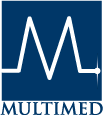Medication Use Patterns in HIV-Positive Patients
DOI:
https://doi.org/10.4212/cjhp.v46i4.2525Keywords:
compliance, HIV/AIDS patients, medication usage, polypharmacy, Observation des prescriptions, patients séropositifs/atteints du SIDA, polypharmacie, utilisation des médicamentsAbstract
ABSTRACT
Patients with HIV infection or AIDS often receive several medications for treatment or prevention of their primary disease and/or associated complications. The objective of this study was to document patterns of drug use in an HIV-positive, outpatient population. Data were collected via one-on-one interviews with 26 HIV-positive patients; prescription and non-prescription drug use, adverse drug reactions and drug allergies were recorded. Anti-retroviral therapy was received by over 90% of the patients. Over 90% of patients were on anti-infective agents, commonly cotrimoxazole or dapsone, while 27% received acyclovir. At least 70% of patients used three or more prescription medications concurrently. Every patient reported self-medicating with at least one over-the-counter (OTC) product and over half used three or more OTC products concurrently. Adverse reactions, mainly attributable to zidovudine, were reported by over 80% of patients. Non-compliance was a common drug-related issue; over 70% of patients omitted drug doses. In conclusion, the use of multiple medications in the ambulatory HIV-positive patients presents the health care team with potential drug-related problems that may ultimately affect the efficacy and toxicity of therapy. Thus pharmacists may play an active role in the provision of direct care to these patients.
RÉSUMÉ
On prescrit souvent plusieurs médicaments aux malades séropositifs ou atteints du SIDA pour traiter ou prévenir l'atteinte initiale et (ou) les complications associées. La présente étude vise à examiner le profil d'utilisation des médicaments au sein d'une population de patients ambulatoires séropositifs. On a collecté les données sur l'utilisation des médicaments d'ordonnance et des médicaments en vente libre, les réactions indésirables et les allergies aux médicaments lors d'entretiens individuels avec 26 patients séropositifs. Plus de 90 p. 100 suivent un
Traitement anti-rétroviral. Plus de 90 p. 100 prennent des anti-infectieux, habituellement le cotrimoxazole ou la dapsone, tandis que 27 p. 100 reçoivent de l'acyclovir. Au moins 70 p. 100 prennent simultanément trois médicaments d'ordonnance ou plus. Tous indiquent qu’ils prennent au moins un médicament en vente libre en guise d'auto-médication; plus de la moitié utilisent simultanément trois de ces produits ou plus. Plus de 80 p. 100 mentionnent des réactions indésirables, principalement attribuables à la zidovudine. Les écarts au régime thérapeutique sont courants; plus de 70 p. 100 omettent de prendre certaines doses de médicaments. En conclusion, la prescription de plusieurs médicaments aux patients ambulatoires séropositifs risque de poser à l'équipe de soins des problèmes d'ordre pharmacologique susceptibles d'avoir des répercussions sur l'efficacité et la toxicité du traitement. Les pharmaciens pourraient donc intervenir activement en fournissant des soins directs à ces patients.Downloads
Downloads
Published
Issue
Section
License
Copyright © Canadian Society of Healthcare-Systems Pharmacy.
After publication of a manuscript in the CJHP, the authors of the manuscript must obtain written permission from the CSHP (publications@cshp.ca) before reproducing any text, figures, tables, or illustrations from the work in future works of their own. If a submitted manuscript is declined for publication in the CJHP, all said rights shall revert to the authors. Please note that any forms (e.g., preprinted orders and patient intake forms) used by a specific hospital or other health care facility and included as illustrative material with a manuscript are exempt from this copyright transfer. The CJHP will require a letter from the hospital or health care facility granting permission to publish the document(s).









